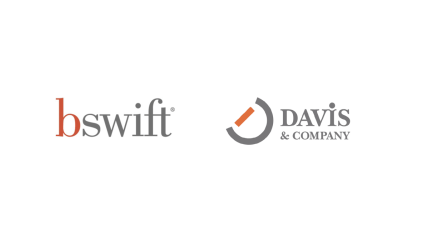
During the first few months of the pandemic, communicators were hard at work helping employees adjust to new work arrangements. And now communicators are grappling with re-entry into the workplace, enhanced safety protocols and businesses that are changing to survive. The headlines hint at one of the toughest jobs many still face: communicating layoffs.
Layoffs are complicated endeavors that require perfect timing, coordinated responsibilities, well-thought-out details and, perhaps most important, empathy. With so many details to figure out, your first critical assignment will be developing a comprehensive communication plan.
But why stop there? Your bird’s eye view of the situation will help you play the role of strategic adviser. Your goal is to influence those at the planning table, so employees are treated with respect and your communication plan is implemented successfully.
Take my colleague, Susan, for example. (“Susan” is a real communication professional, but I’ve changed her name because she works for an organization that has laid people off and is in the midst of planning more layoffs.)
When Susan recently reached out, she told me, “Communicating this type of information is nerve-wracking!”
Even smart, experienced communicators need reassurance now and then. During our conversation, I realized the help she needed boiled down to two things:
- Putting her arms around all of the tasks that needed to happen
- Influencing her colleagues (including HR and senior leaders) to lead with empathy
How could Susan best do so? By taking on key responsibilities in these four areas:
Prioritize the employee experience
Keep the employee experience top of mind among organizers by bringing the voice of employees to the table: e.g. Here are the questions employees will have. Here’s the hit we can expect on morale and engagement, and how to plan for it.
When a healthcare company acquired another organization, deep, ongoing changes were required to ensure a successful new company: from closing sites to reshaping business units. One member of the leadership team had tough goals to meet and decided to close a facility—the week before the end-of-year holiday break. The communication team leapt into action and recommended a delay, which would be better for morale and provide the opportunity to roll the closure into other changes. After some back and forth, the leader agreed. The closure was announced during the second week of January.
Maintain focus
Help the organization stay focused on the big picture, so the pieces feel part of a purposeful strategy.
Communicators are often in the unique position of seeing many moving parts at a high level: the reorganization in sales, the layoffs in manufacturing and R&D, the restructuring across North America. Take advantage of that position by investigating the impact of a layoff across the business and developing a story of how the pieces fit together, including context, vision and plan. Your investigation may include one-on-one interviews with senior leaders to understand how and when their groups will make changes.
Stick with the plan
With large, complex layoffs (and subsequent reorganizations), it’s important to keep the trains running on time, so leaks are managed and employees are treated with respect. Help key players stick to the plan—especially when emotions rise and anecdotal evidence suggests a reaction or special treatment is necessary.
When layoffs and expense reductions were being made across the facilities of an acquired company, one of the senior leaders who remained explained, “You can’t take away the fruit baskets in common areas. Employees value them and see them as a sign of our culture.” The communication team decided to explore the issue (and several other concerns) with a few focus groups. The goal was to understand the impact on culture if the fruit baskets were cut from the budget. The response? “Which fruit baskets?”
Emphasize empathy
Encourage key stakeholders to lead with empathy, including HR professionals who are focused on checking the boxes of administrative duties, and leaders who want to reach their objectives and get to the next step.
Coaching can take the form of classic tools, such as scripts, key messages and FAQs. But I have three favorite techniques to help those who will interact with impacted employees, as well as employees who will remain:
- Highlight the impulse to soften the blow. Help leaders and key stakeholders understand that employees prefer to hear bad news plainly and directly, not sugarcoated. And that promises made in the heat of the moment often can’t be met.
- Rehearse tough questions. The more difficult, the better. Practice helps everyone appear comfortable with the tough decisions that had to be made.
- Imagine the future. Ask those who will be responsible to communicate directly with impacted employees to imagine running into a laid-off employee six months later: “Will you feel comfortable looking at him/her and asking, ‘How are you doing?'”
How did Susan rise to the challenge?
She fulfilled the key responsibilities of her role:
Advocate. Susan knew from the beginning that leading with empathy would be a challenge, “I’m finding that a tone of compassion will be difficult as leaders are also trying to walk fine lines with legal advice, employment law and HR process.” But she didn’t back down and embedded empathy in every communication channel. For example, “Care and concern” was one of three categories in her key messages, and she included empathy reminders in scripts for people managers and HR professionals.
Strategist. When planning teams are faced with the daunting task of layoffs, they naturally focus on the mechanics. After all, there are many boxes to be checked. But Susan brought the planning team back to the organization’s mission and values, and helped the team ensure that every interaction reflected them.
Facilitator. In Susan’s words, “Facilitating development of the plan can be tricky because HR may have the view that they will explain the process.” Because of the strength of Susan’s communication plan, it became the manual for the planning team. Beyond the step-by-step list of tactics, she included clear objectives, a comprehensive set of key messages and a plan for measurement after the layoff announcements.
The good news is that Susan received positive feedback from her colleagues who were laid off: They appreciated how the situation was handled, even if the news was not good. So she fulfilled her important objective of managing layoffs with compassion and empathy.
Originally published on iabc.com





